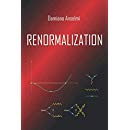Classicization
Talk given at Penn State University, Dec 17, 2019
A new quantization prescription is able to endow quantum field theory with a new type of “particle”, the fakeon (fake particle), which mediates interactions, but cannot be observed. A massive fakeon of spin 2 (together with a scalar field) allows us to build a theory of quantum gravity that is both renormalizable and unitary, and to some extent unique. The theory predicts that causality is lost at sufficiently small distances, where time makes no longer sense. After presenting the general formulation of the theory, I explain its nontrivial classical limit, the modifications of the FLRW metric and the role of the cosmological constant. Finally, I discuss the possibility that the Higgs boson might be a fakeon.
The correspondence principle made of unitarity, locality and renormalizability has been very successful in quantum field theory. Among the other things, it helped us build the standard model. However, it also showed important limitations. For example, it failed to restrict the gauge group and the matter sector in a powerful way. After discussing its effectiveness, we upgrade it to make room for quantum gravity. The unitarity assumption is better understood, since it allows for the presence of physical particles as well as fake particles (fakeons). The locality assumption is applied to an interim classical action, since the true classical action is nonlocal and emerges from the quantization and a later process of classicization. The renormalizability assumption is refined to single out the special role of the gauge couplings. We show that the upgraded principle leads to an essentially unique theory of quantum gravity. In particular, in four dimensions, a fakeon of spin 2, together with a scalar field, is able to make the theory renormalizable while preserving unitarity. We offer an overview of quantum field theories of particles and fakeons in various dimensions, with and without gravity.
Proceedings of the conference “Progress and Visions in Quantum Theory in View of Gravity: Bridging foundations of physics and mathematics“, Max Planck Institute for Mathematics in the Sciences, Leipzig, October 2018
Talk given at the Centre de Physique Theorique of the University of Marseille on June 28th, 2019
A new quantization prescription is able to endow quantum field theory with a new type of “particle”, the fakeon (fake particle), which mediates interactions, but cannot be observed. A massive fakeon of spin 2 (together with a scalar field) allows us to build a theory of quantum gravity that is both renormalizable and unitary, and to some extent unique. After presenting the general properties of this theory, I discuss its classical limit, which carries important remnants of the fakeon quantization prescription. I also discuss the possibility that the Higgs boson might be a fakeon.
Talk given at the conference “Gravity and other fields under the volcano”, Catania, Italy, June 10th, 2019
A new quantization prescription is able to endow quantum field theory with a new type of “particle”, the fakeon (fake particle), which mediates interactions, but cannot be observed. A massive fakeon of spin 2 (together with a scalar field) allows us to build a theory of quantum gravity that is both renormalizable and unitary, and to some extent unique. After presenting the general properties of this theory, I discuss its classical limit, which carries important remnants of the fakeon quantization prescription. I also discuss the possibility that the Higgs boson might be a fakeon.
Talk given at the Conference “Scale invariance in particle physics and cosmology“, CERN, on January 29th, 2019
A new quantization prescription is able to endow quantum field theory with a new type of “particle”, the fakeon (fake particle), which mediates interactions, but cannot be observed. A massive fakeon of spin 2 (together with a scalar field) allows us to build a theory of quantum gravity that is both renormalizable and unitary, and to some extent unique. After presenting the general properties of this theory, I discuss its classical limit, which carries important remnants of the fakeon quantization prescription.
Under certain assumptions, it is possible to make sense of higher derivative theories by quantizing the unwanted degrees of freedom as fakeons, which are later projected away. Then the true classical limit is obtained by classicizing the quantum theory. Since quantum field theory is formulated perturbatively, the classicization is also perturbative. After deriving a number of properties in a general setting, we consider the theory of quantum gravity that emerges from the fakeon idea and study its classicization, focusing on the FLRW metric. We point out cases where the fakeon projection can be handled exactly, which include radiation, the vacuum energy density and the combination of the two, and cases where it cannot, which include dust. Generically, the classical limit shares many features with the quantum theory it comes from, including the impossibility to write down complete, “exact” field equations, to the extent that asymptotic series and nonperturbative effects come into play.
J. High Energy Phys. 04 (2019) 61 | DOI: 10.1007/JHEP04(2019)061

 Quantum Gravity
Quantum Gravity 


